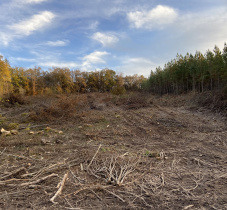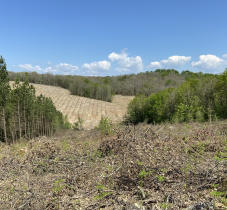Project description
With Reforest'Action, participate in the restoration of this forest in Notre-Dame-de-Sanilhac !
The project at a glance
- Number of trees to be planted: 5,794
- Plantation area: 4.43 hectares
- Species planted: maritime pine, sessile oak, hornbeam, wild pear, cider, apple, lime, maple, cherry, black ash
- Project type: reforestation of a dying forest
- Planting season: March 2023
The origin of the project
In New Aquitaine, in the Périgord region, these parcels were cleared for agricultural use. Unfortunately, the former owners did not proceed to the regulatory reforestation. The forest stand being strongly impoverished, the trees no longer showed any sign of natural regeneration. After interventions by the DDT to regularize the situation, a new owner finally acquired these parcels to proceed with the restoration of the forest ecosystem.
On the most rugged sites, maritime pines and taedas are planted in order to guarantee the sustainability of a stand adapted to local climatic conditions. On the best sites, oak and hornbeam species are introduced. These will contribute to the sustainable production of wood within the local industry. At the same time, deciduous species, especially fruit trees, are planted along the plots and paths in order to guarantee a pleasant leisure environment in this forest.
The diversity of species will help to strengthen the fragile soils in these sometimes steep areas. A real carbon sink, the growth of this new sustainably managed forest will also allow the capture of atmospheric carbon dioxide, thus fighting against global warming.






